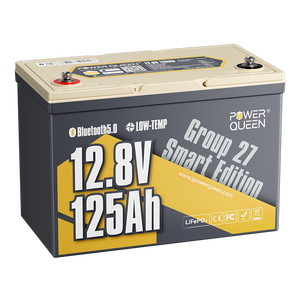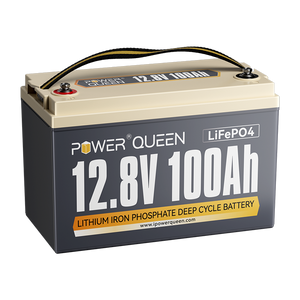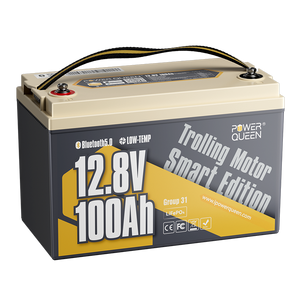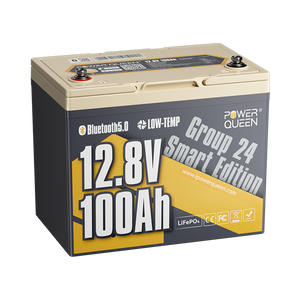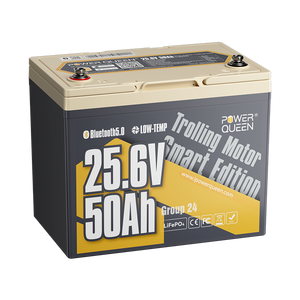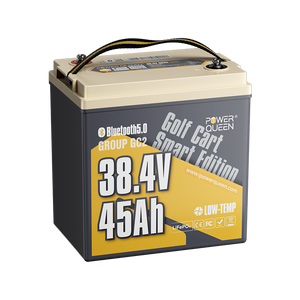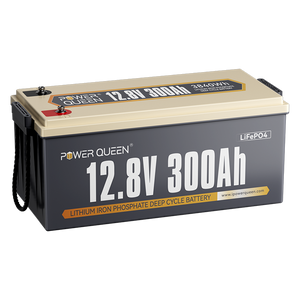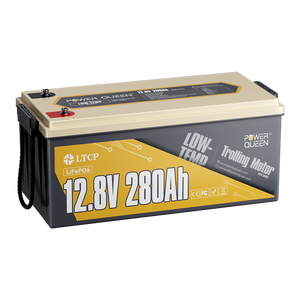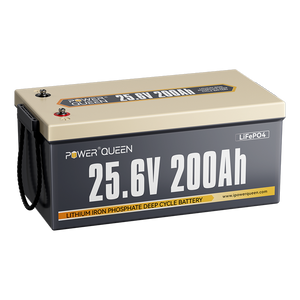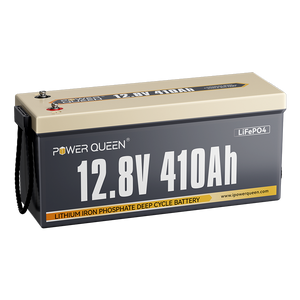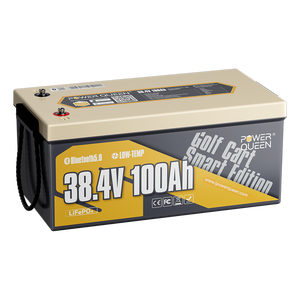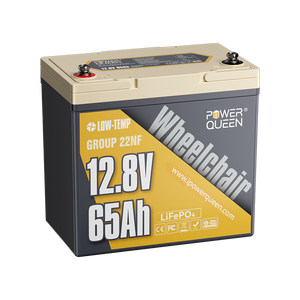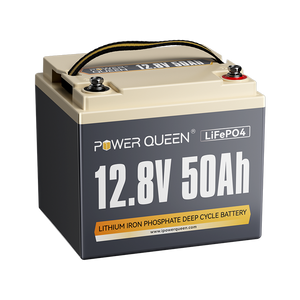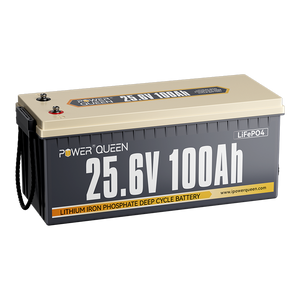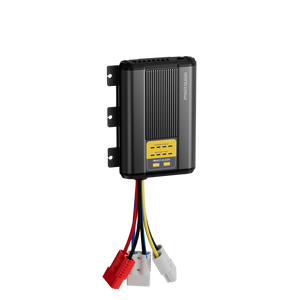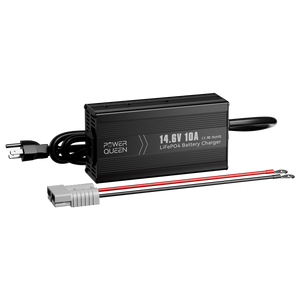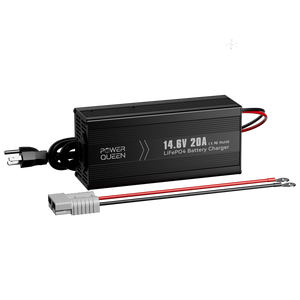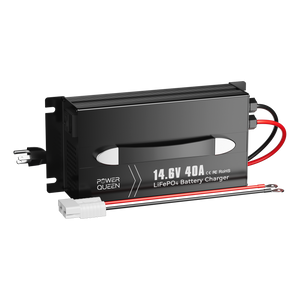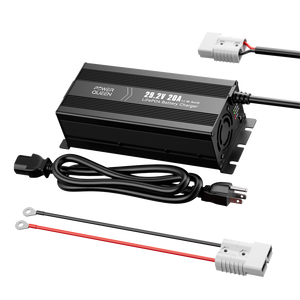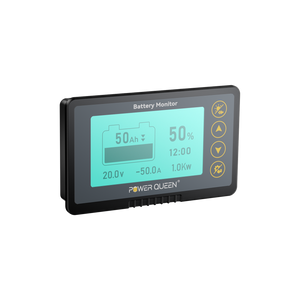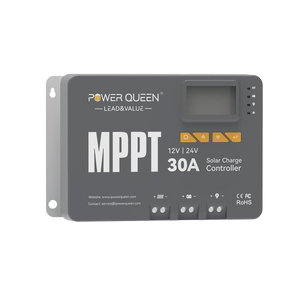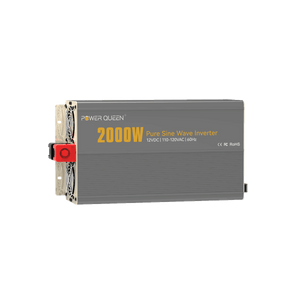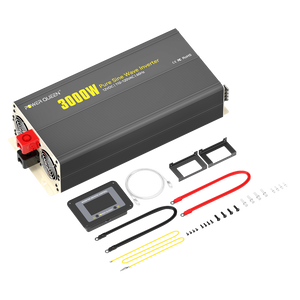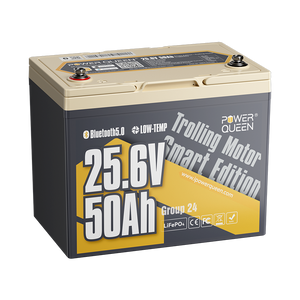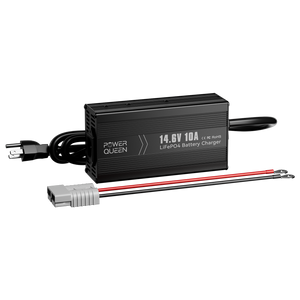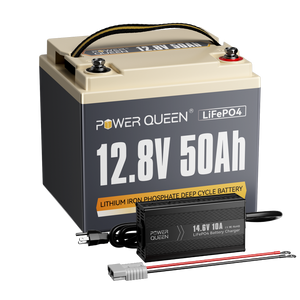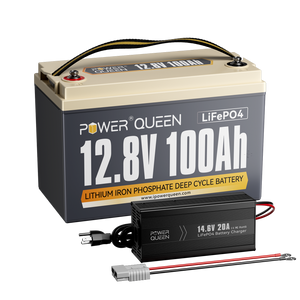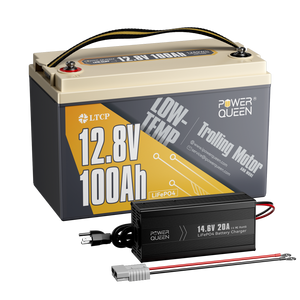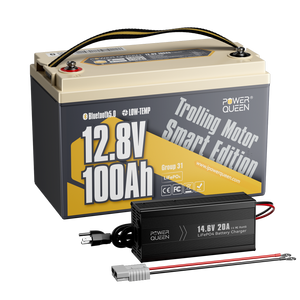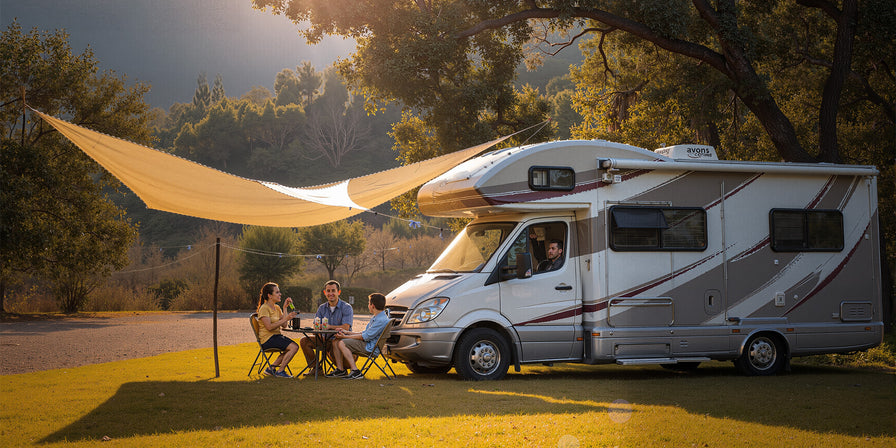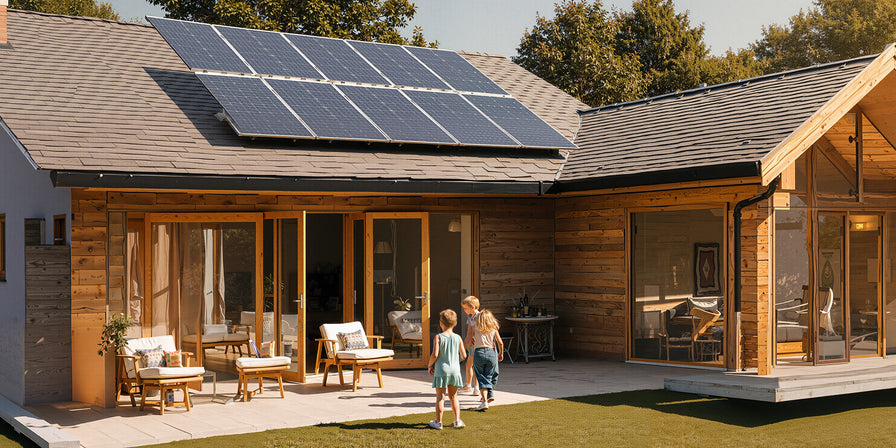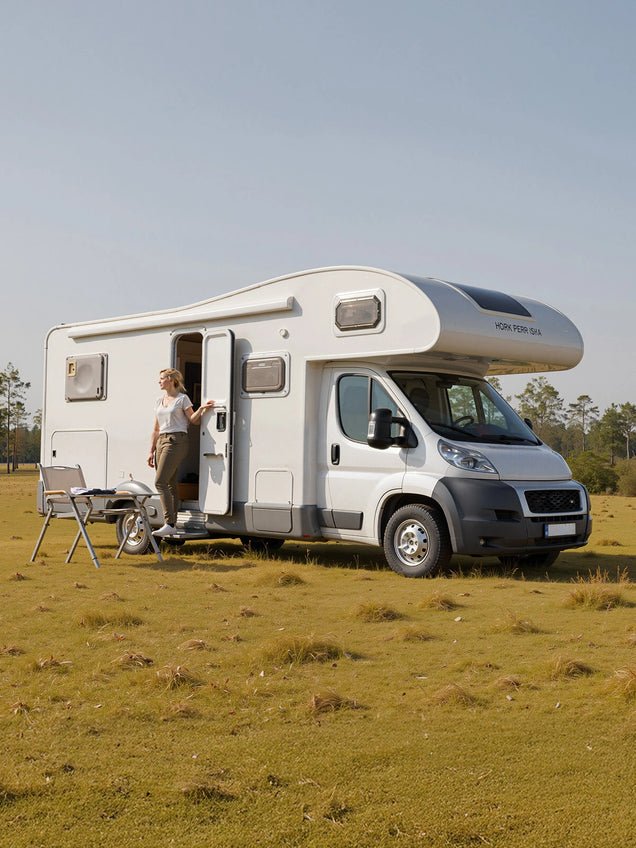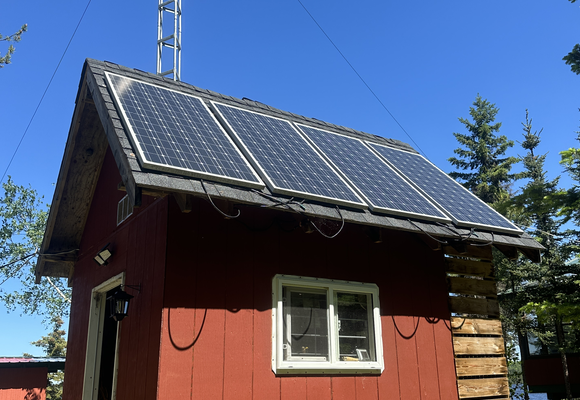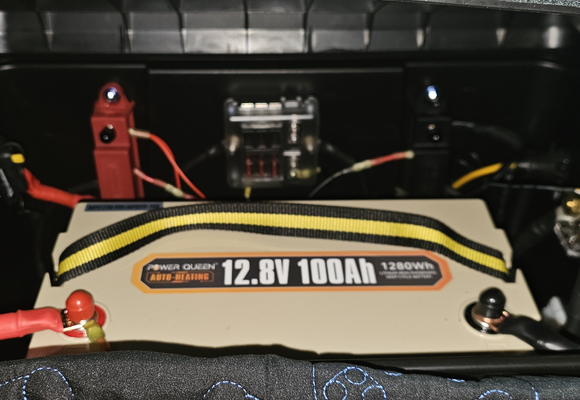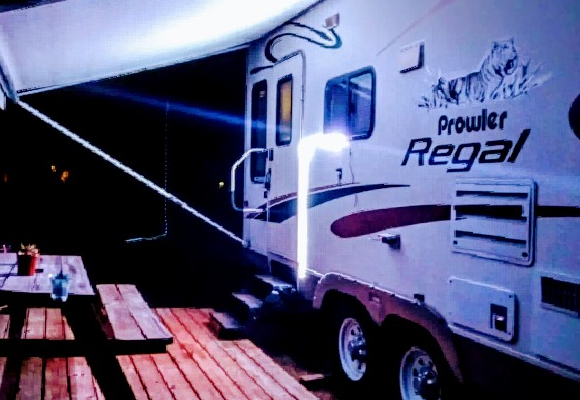Why is Low Temperature Protection Important to Lithium Batteries
Lithium iron phosphate (LiFePO4) batteries have emerged as a preferred energy source across various applications, from renewable energy systems to electric vehicles, due to their safety, longevity, and environmental friendliness. However, for all their robustness, LiFePO4 batteries are not immune to the challenges posed by cold environments. Understanding why low temperature protection is paramount can help maximize the performance, safety, and lifespan of these batteries.
Understanding LiFePO4 Battery Chemistry
A LiFePO4 battery is a type of lithium-ion battery that uses lithium iron phosphate as the cathode material. At its core, the performance of a LiFePO4 battery is anchored in the movement of lithium ions between the anode and cathode during charging and discharging processes. This movement, however, is highly temperature-dependent.
The Low Temperature Challenge
At lower temperatures, the internal resistance of a LiFePO4 battery increases significantly. This rise in resistance impedes the mobility of lithium ions within the electrolyte, making it harder for the battery to charge and discharge effectively. Below certain temperature thresholds, typically around 0°C (32°F), the following issues can arise:
Reduced Capacity: The available capacity of a LiFePO4 battery can drop dramatically at cold temperatures because the chemical reaction that produces electrical energy is less efficient.
Diminished Charge Acceptance: Cold temperatures can severely reduce the ability of the battery to accept a charge. Attempting to force charge at a normal rate could lead to plating of metallic lithium on the anode, which is irreversible and detrimental.
Slower Discharge Rates: The battery's ability to provide power is compromised, potentially failing to meet the energy demands of the device or system it's powering.
Long-term Damage: Repeated charging and discharging under low-temperature conditions can lead to permanent damage, reducing both the cycle life and the overall lifespan of the battery.
Consider these general temperature ranges for lithium batteries
Operating Temperature Range: Typically, lithium batteries operate within a temperature range of -20°C to 60°C (-4°F to 140°F), ensuring proper functionality within this span.
Charging Temperature Range: It's recommended to charge lithium batteries between 0°C to 45°C (32°F to 113°F) to ensure efficient charging and avoid potential issues.
Related reading: How to Charge LiFePO4 Lithium Battery
Storage Temperature Range: For optimal preservation of capacity and performance, store lithium batteries within a temperature range of 15°C to 25°C (59°F to 77°F).
It's important to note that these are general guidelines, and specific lithium battery models or manufacturers may have different requirements. Always consult the product specifications for accurate temperature limits.
Charging lithium batteries outside these ranges can pose risks. Charging below freezing may slow down reactions and cause damage, while charging above the recommended range can lead to overheating, thermal runaway, or even explosion.
Low Temperature Protection Mechanisms
To counteract these issues, protection measures are key:
Battery Management Systems (BMS): A BMS can monitor individual cell temperatures and prevent charging when the battery is below the safe temperature threshold. It can also balance cells to ensure uniform temperature and mitigate the risks of cold charging.
Power Queen 12V 100Ah & 200Ah Low Temp versions are built up with the upgraded BMS which can automatically cut-off charging when it’s below 0℃ (32℉).
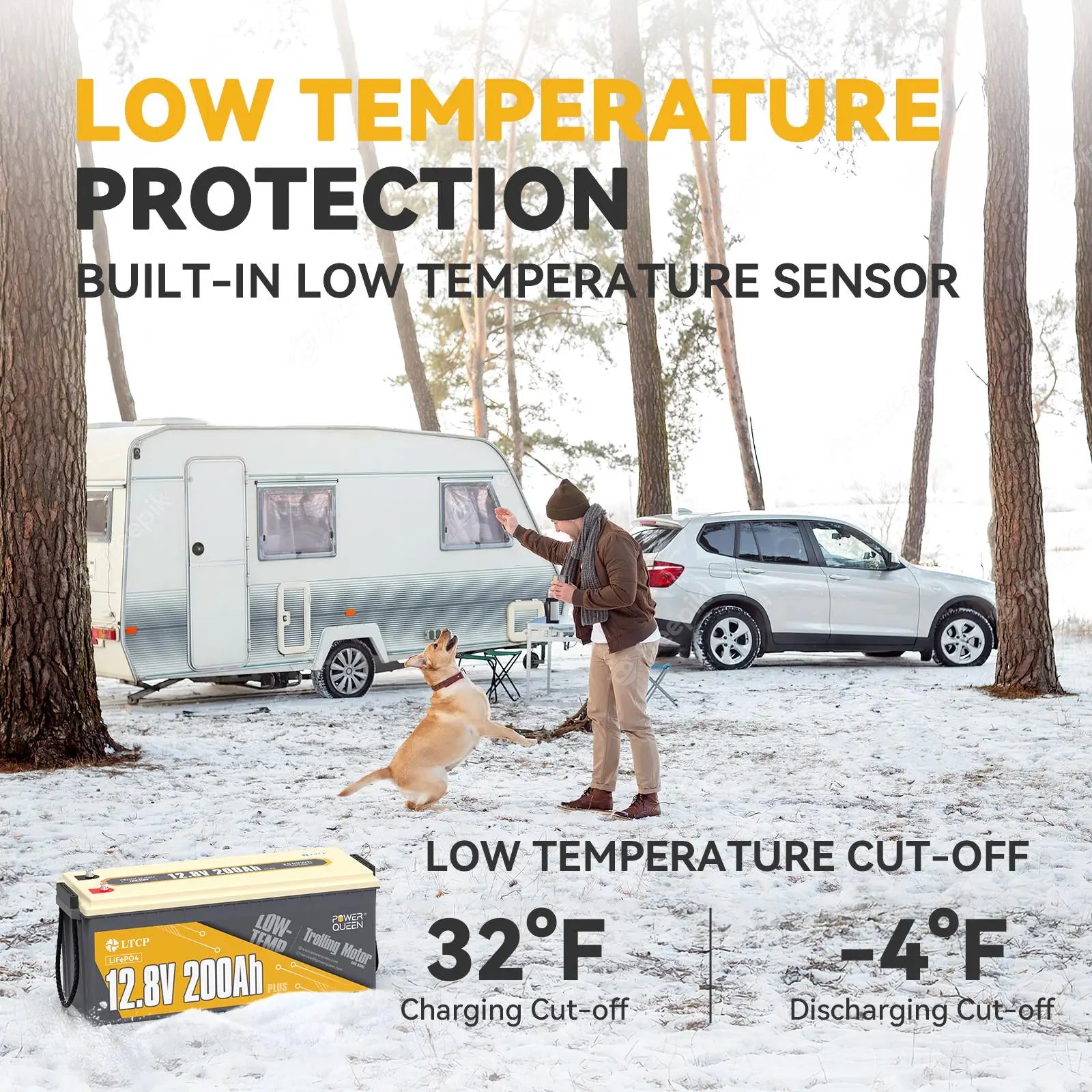
Besides the low temperautre protection, the BMS also provides the safeguards of over-charging, over-discharging, over-current, high temperature and short circuit.
Thermal Management Solutions: Implementing heating mechanisms within the battery system can maintain optimal temperatures. This can range from insulated enclosures to integrated heating elements that activate when temperatures drop too low.
Power Queen 12V 100Ah self-heating LiFePO4 llithium battery comes equipped with an integrated automatic heating feature. This function is triggered when the battery is plugged into a charger and the ambient temperature is between -20℃ and 5℃ (-4℉ to 41℉). Once the battery temperature hits 10℃ (50℉), the heating mechanism automatically turns off.
The warming process takes roughly 90 minutes to elevate the battery temperature from -10℃ (14℉) to 10℃ (50℉) and approximately 150 minutes to raise it from a colder -20℃ (-4℉) to 10℃ (50℉).



Intelligent Charging Strategies: Smart charging technology can adjust charging rates according to temperature, ensuring that the battery isn't damaged by charging too quickly in cold conditions.
Low-temperature Chemistry Adaptations: Some LiFePO4 cells are designed with additives or specialized electrolytes that enhance low-temperature performance and reduce the risks associated with cold environments.
How to Keep Your Batteries Warm in Winter
Keeping LiFePO4 (Lithium Iron Phosphate) batteries warm during winter is important to maintain their functionality and longevity. Here are some strategies you can use:
1. Insulation
Use Insulated Battery Boxes: Store your batteries in insulated boxes to help maintain their temperature. This can be as simple as using a thick foam or specially designed thermal cases that fit around the battery.
Add Insulation Wraps: Use insulation wraps or blankets specifically made for batteries. These often reflect heat back towards the battery, helping to keep it warm.
2. Temperature Controlled Environments
Heated Spaces: Store the batteries in a space with controlled heating, like a garage or shed with a small heater, ensuring the ambient temperature doesn't fall below the battery's minimum operating temperature.
3. Battery Heating Solutions
Integrated Battery Heaters: Some LiFePO4 batteries come with built-in heating systems that can be automated to turn on at certain temperatures.
External Battery Warmers: Purchase external battery warmers, which are like heating pads, to maintain a battery’s operational temperature range.
4. Charging Strategies
Charge During the Warmest Part of the Day: If possible, charge the battery when temperatures are naturally higher to help reduce the strain on the battery.
Slow Charging: Use a slower charging rate, as it generates less heat and is less likely to damage the battery if temperatures are lower than ideal.
5. Smart Electronics
Use a Smart Battery Management System (BMS): A BMS can monitor and regulate the temperature, ensuring the battery doesn’t charge or discharge at temperatures that could cause damage. Some systems can even control external heaters.
6. Protective Placement
Keep Batteries Indoors: When not in use, bring portable batteries inside to keep them at room temperature.
Bury Battery Banks: For more stationary applications, like in an off-grid solar setup, consider burying your battery bank underground where the temperature is more constant and warmer than the air during winter.
7. Regular Maintenance
Monitor Battery Status: Keep a regular check on the battery state of charge and health. Batteries left in a discharged state can be more susceptible to damage from cold temperatures.
Keep Connections Tight: Ensure that all connections are secure, as this can affect battery efficiency and its ability to warm up while in use.
8. Pre-Planning Use
Gradual Warm-Up: Prior to use, allow the battery to warm up gradually to the operational temperature range before drawing significant power from it.
By taking these steps, you can help ensure that your LiFePO4 batteries maintain optimal performance during the cold winter months. Remember, always follow the manufacturer's recommendations for temperature management and understand the specifications of your particular batteries.
Conclusion
In conclusion, the importance of low temperature protection in LiFePO4 batteries cannot be overstated. By understanding the challenges and integrating the right technologies and strategies, we can help secure the integrity and performance of these batteries in cold climates, ensuring they continue to power a future that's increasingly reliant on sustainable, reliable, and safe energy storage solutions.
💡 Want a Complete Guide to Lithium Batteries in Cold Weather? For a full overview of lithium battery performance, protection mechanisms, and best practices in cold climates, read our complete guide to lithium batteries in cold weather .
